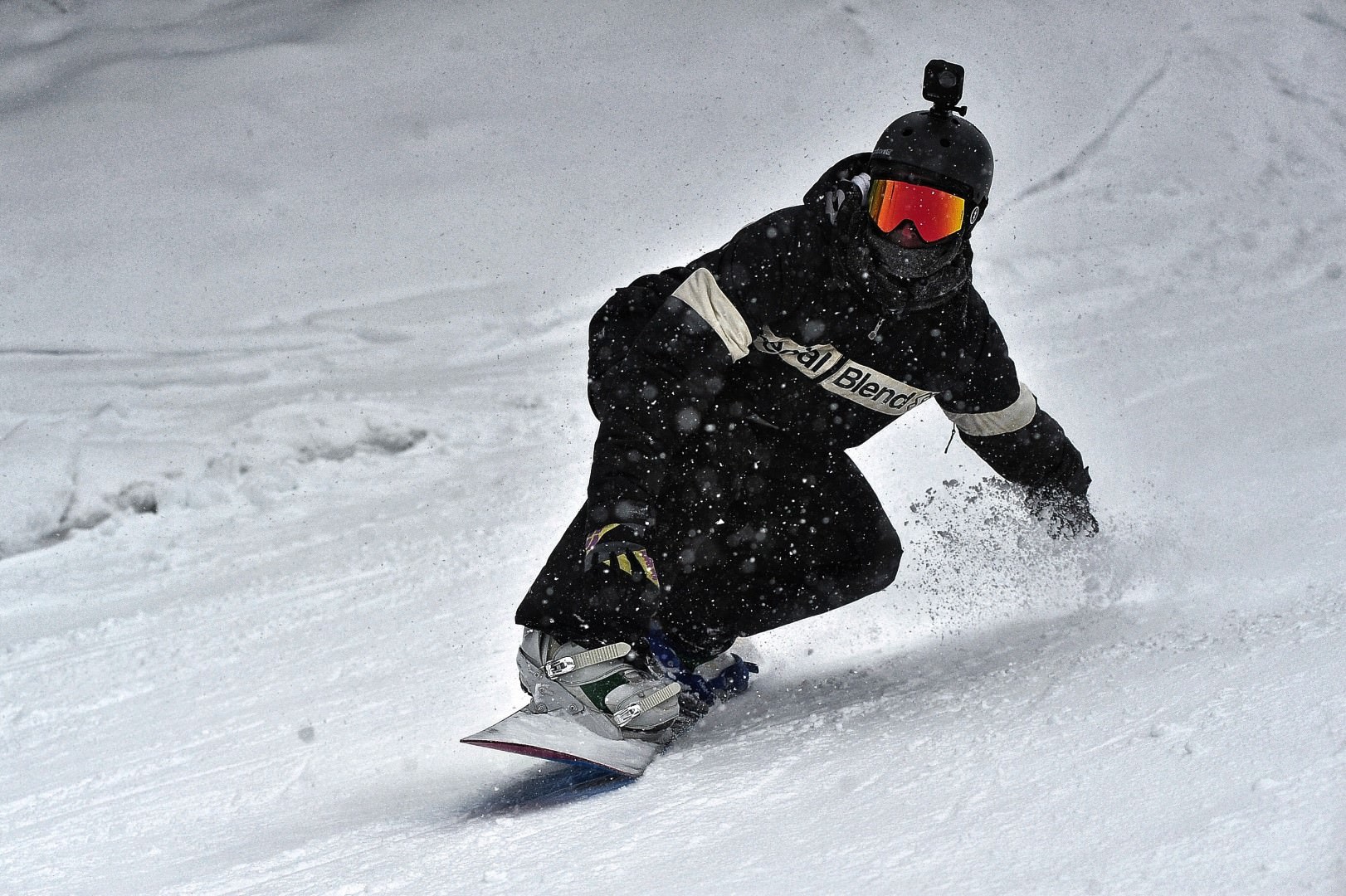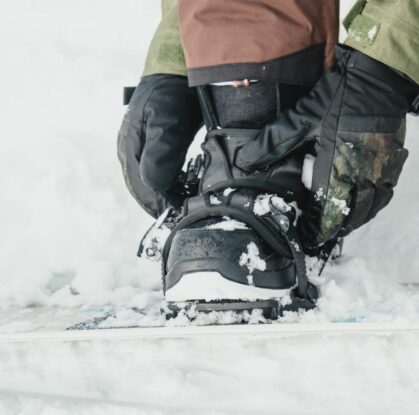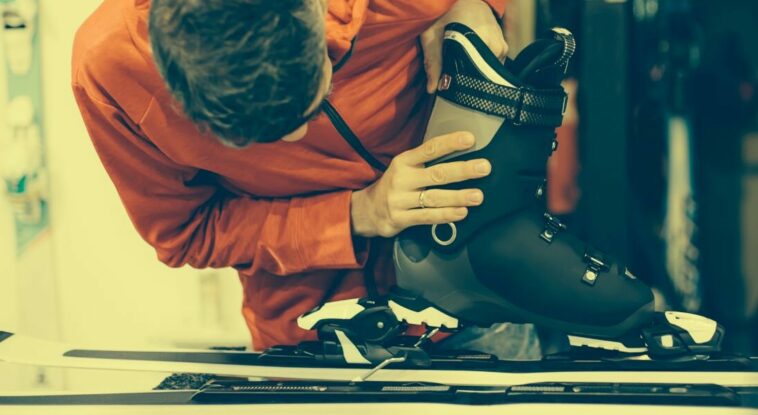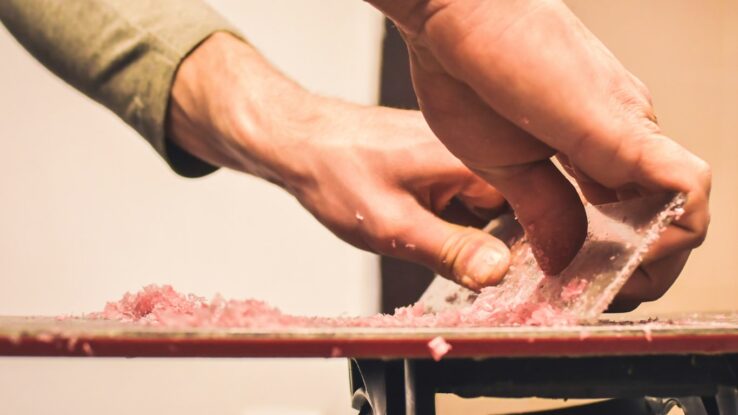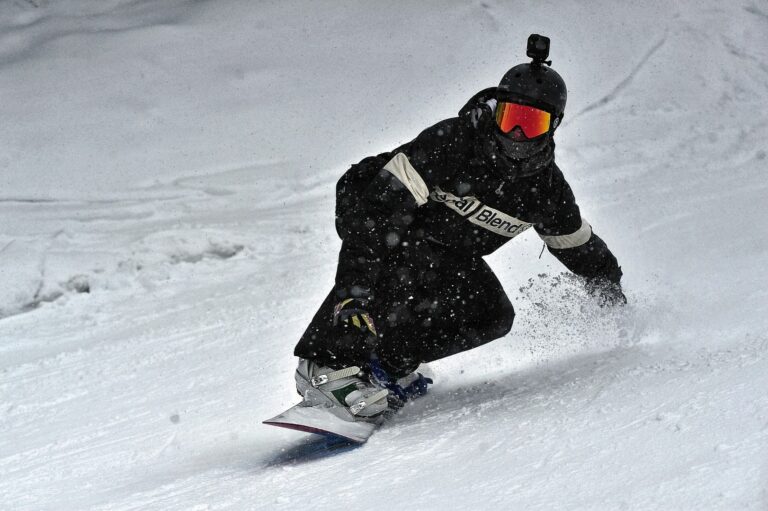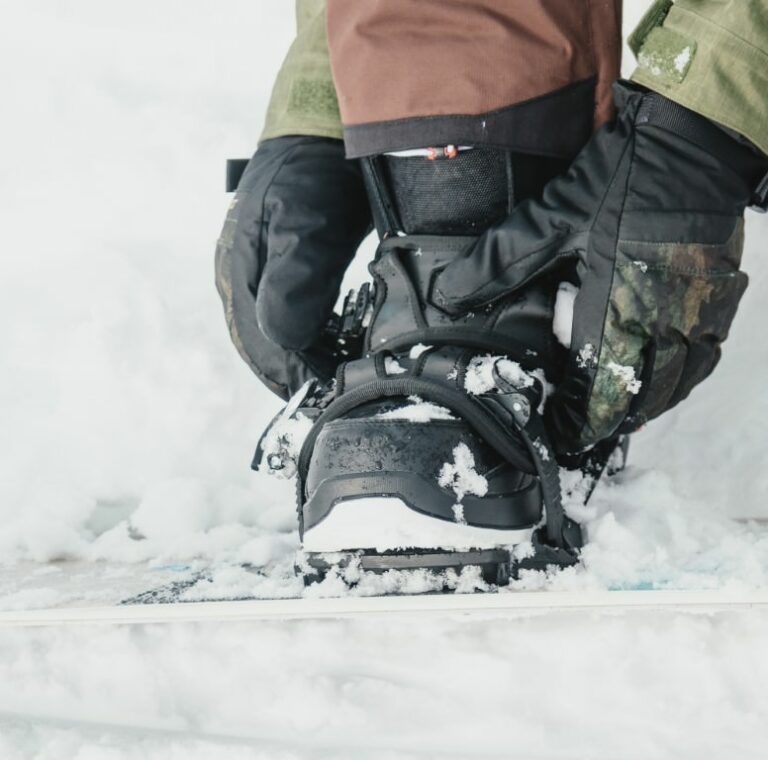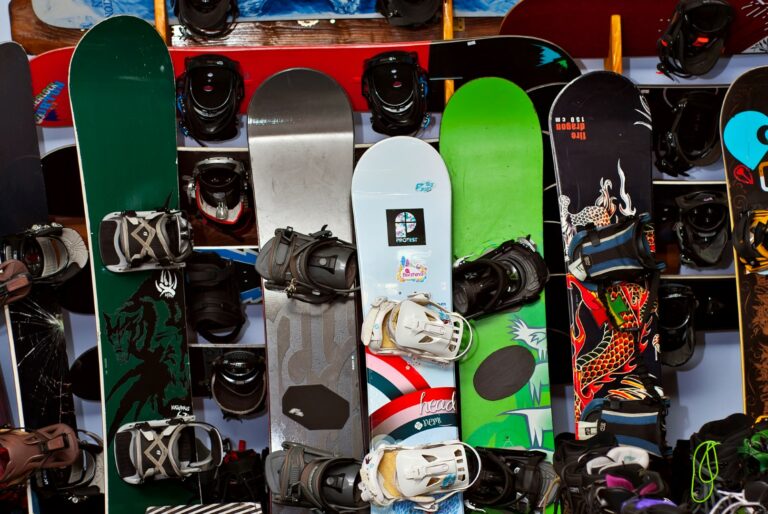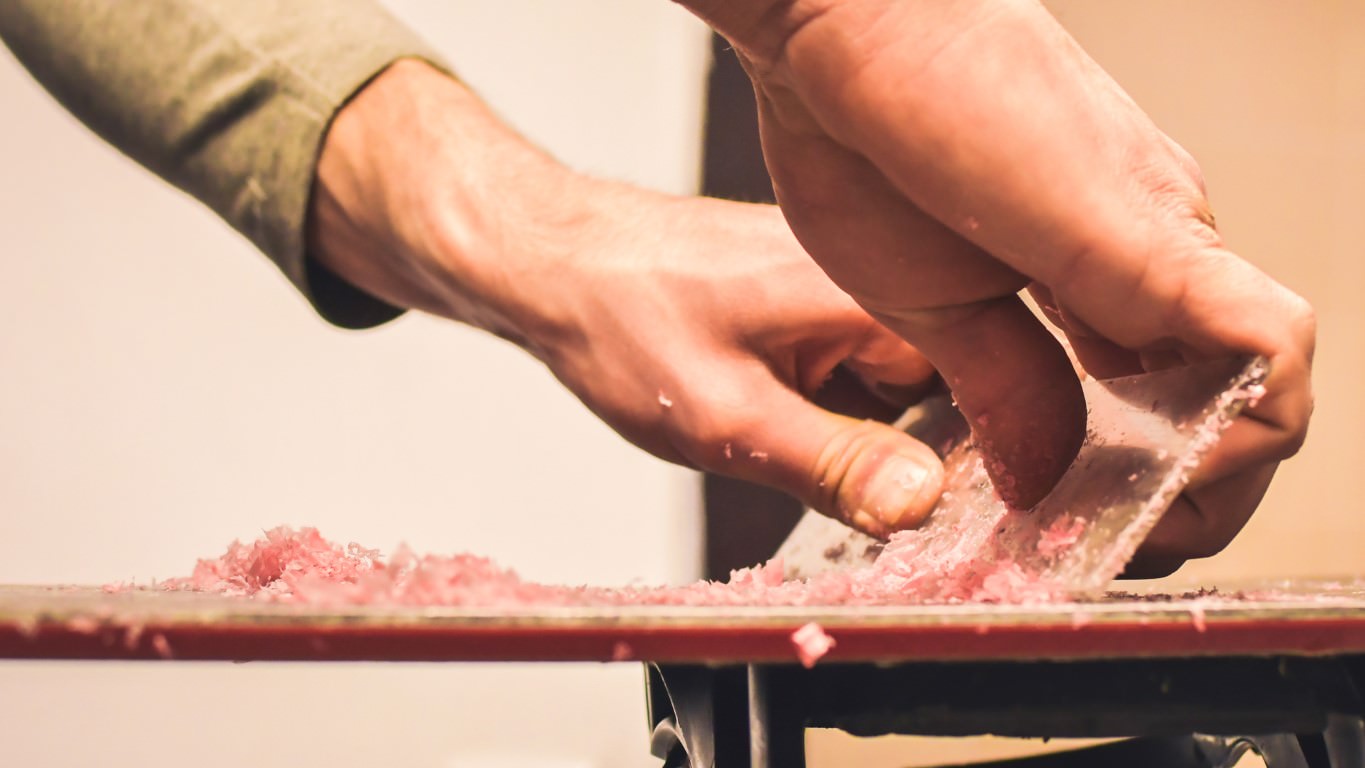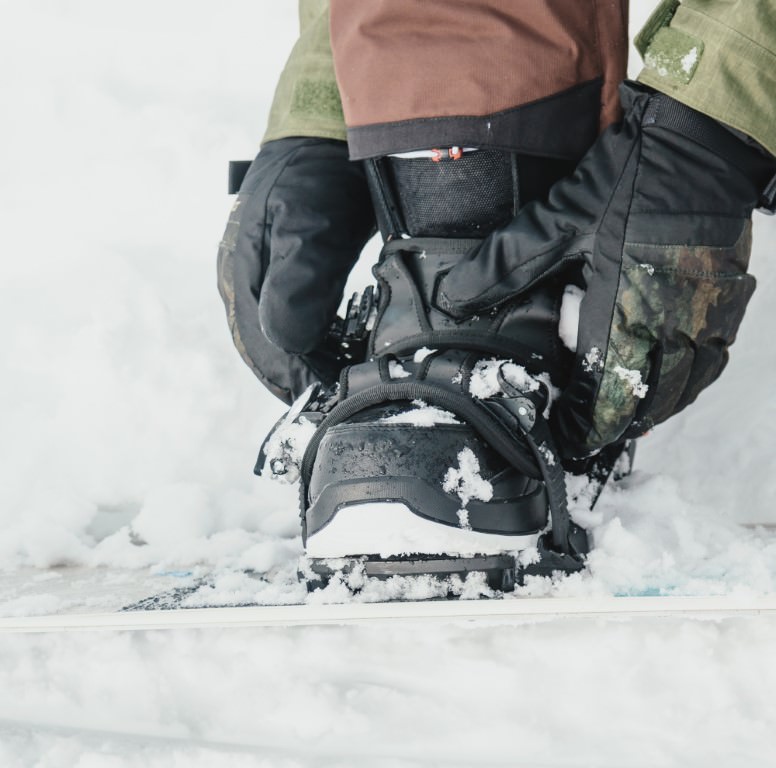The best way to prepare and maintain your body for snowboarding is exercise and cardio that you can practice year-round. This article will break down the muscle groups used in snowboarding and provide you with exercises you can do year round to develop your body into a shredding machine.
How Physically Demanding Is Snowboarding?
Snowboarding is a very physically demanding sport. As you ride down a slope, you’re essentially doing multiple squats while engaging your core for balance. Long days on the slopes could see hundreds of squats completed.
While doing all of these squats, your muscle endurance and cardio are being tested. In general, the longer you’re exercising, the more you’ll notice it. Snowboarding tests a rider’s strength and endurance. To get yourself to a certain level, you need to be able to ride, concentrate and handle movements without fatiguing too quickly. The longer you can push your aerobic limit, the more snowboarding you can do! This is where fitness training comes into play.
What Are the Key Muscle Groups Used in Snowboarding?
Snowboarding is mostly lower body dominant. It technically uses all of the muscles in your lower body for movement and balance. The major muscle groups that are used are your quadriceps, hamstrings, glutes and calves.
The quads and glutes are used when bending and extending in your turns. The calves help engage your turn, and the hamstrings help control and hold your edge as you lean into your turns. Core muscles are used during all snowboard movements as they control your balance and stability during most movements.
How to Build Your Cardiovascular Endurance
With all that muscle engagement, you’re guaranteed to feel your lungs pumping harder to push oxygenated blood into the lower body. This is where your cardiovascular endurance will be tested. The longer you can sustain peak muscle performance, the longer you’ll be able to safely participate in the sport.
Everyone has some level of base cardiovascular endurance. Some people will be able to pick up snowboarding and ride all day, while others will struggle with one run. There are several different exercises you can try which will help increase your cardio to aid in the development of your snowboarding ability.
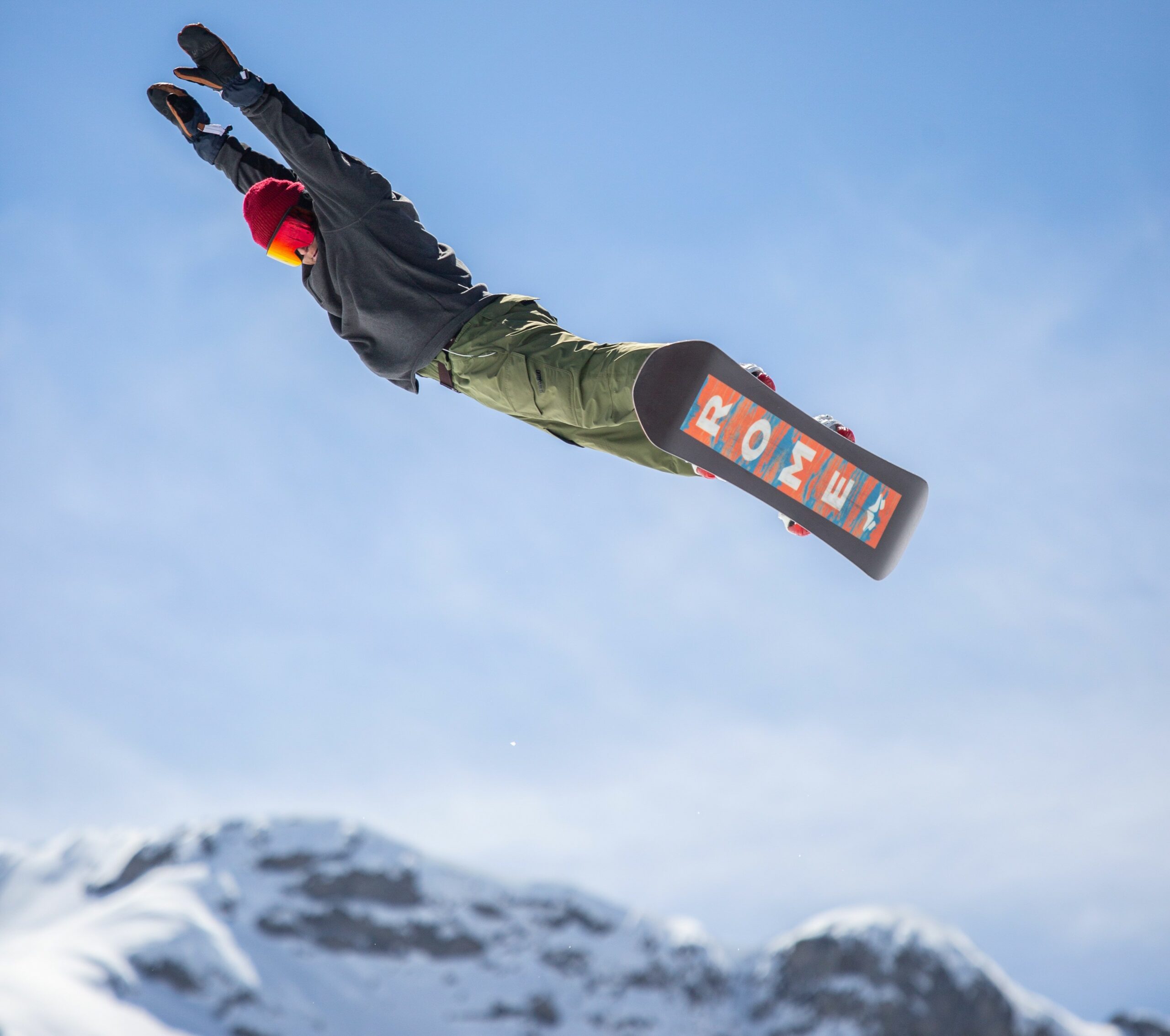
Cycling or Mountain Biking
Getting on a bicycle or cross trainer is one of the easiest ways to start training your cardio. Biking uses a lot of the same muscles used in snowboarding, and it’s relatively easy on the knees.
To train your cardiovascular endurance, try cycling or mountain biking for 30-60 minutes a few times a week to start. Cardio can be brutal when you start training but it is something that develops very quickly, so you just need to keep at it.
Mountain biking is not only excellent for cardio, but it’s also valuable training for your cognitive processing speed and reaction time. The faster you can process the terrain in front of you, the easier it will be to ride, make split second decisions and prepare for falls that might take you by surprise.
Trail Running or Hiking
Getting those legs moving will help with cardiovascular endurance and lower body muscle endurance. Running and hiking provide great opportunities to increase your cardiovascular endurance and muscle strength. These movements especially help strengthen your lower body for prolonged loads, which are seen when snowboarding. Aim for 30-60 minutes of running or hiking at a faster pace than walking.
While running or hiking, you can also add some interval training to blast your muscles. Adding burpees, body squats, calf raises, and jumps can help train the lower body’s muscle endurance.
High Intensity Interval Training (HIIT)
If you’re a true sucker for pain and punishment, the addition of interval training once a week will drastically increase your aerobic ability. Interval training can be seen as a similar situation to the aerobic requirements required during a snowboard run.
Interval training is short, high-intensity training sets followed by rest done in rounds. Run or cycle hard for 3 minutes, followed by a short 2 minute rest and repeat several times. Find a long hill and do the same. The idea is to blast your muscles hard for a short period of time and recover quickly before doing it again. This training emulates the endurance requirement seen in many sports, including snowboarding.
Here is a great program for adding interval training to your running. You can also use this for cycling too.
No matter where you find yourself on this cardio scale, improving your cardiovascular endurance is a great step in increasing your snowboarding ability and your overall cardiovascular health.
Enhancing Power and Control Through Strength Training
Once you have an idea of how to develop your cardio to improve your time on snow, you’ll want to understand how strength training can aid in your progression as a rider. Developing strong and explosive lower body moments allows you supreme control and an increase in performance you won’t get from changing your snowboard gear. Powerful turns, explosive jumps and fast movements can be developed by spending time in the gym.
You’ll want to focus on the standard lower body exercises known for building leg strength. Squats, single leg deadlifts, leg presses, lunges, and box jumps can be utilized to increase lower body strength. Aim for 3/4 sets of 8-12 reps.
To strengthen the core and upper body, you can do plank variations, medicine ball throws, cable twists, pullups, pushups and dips. Burton has developed a great beginner workout plan that you can do at home or add weight to in the gym.
If you’re already an active gym goer, you can add some of the above exercises into your gym days. As long as you’re really working your lower body and core in the gym, you’re on the right track.
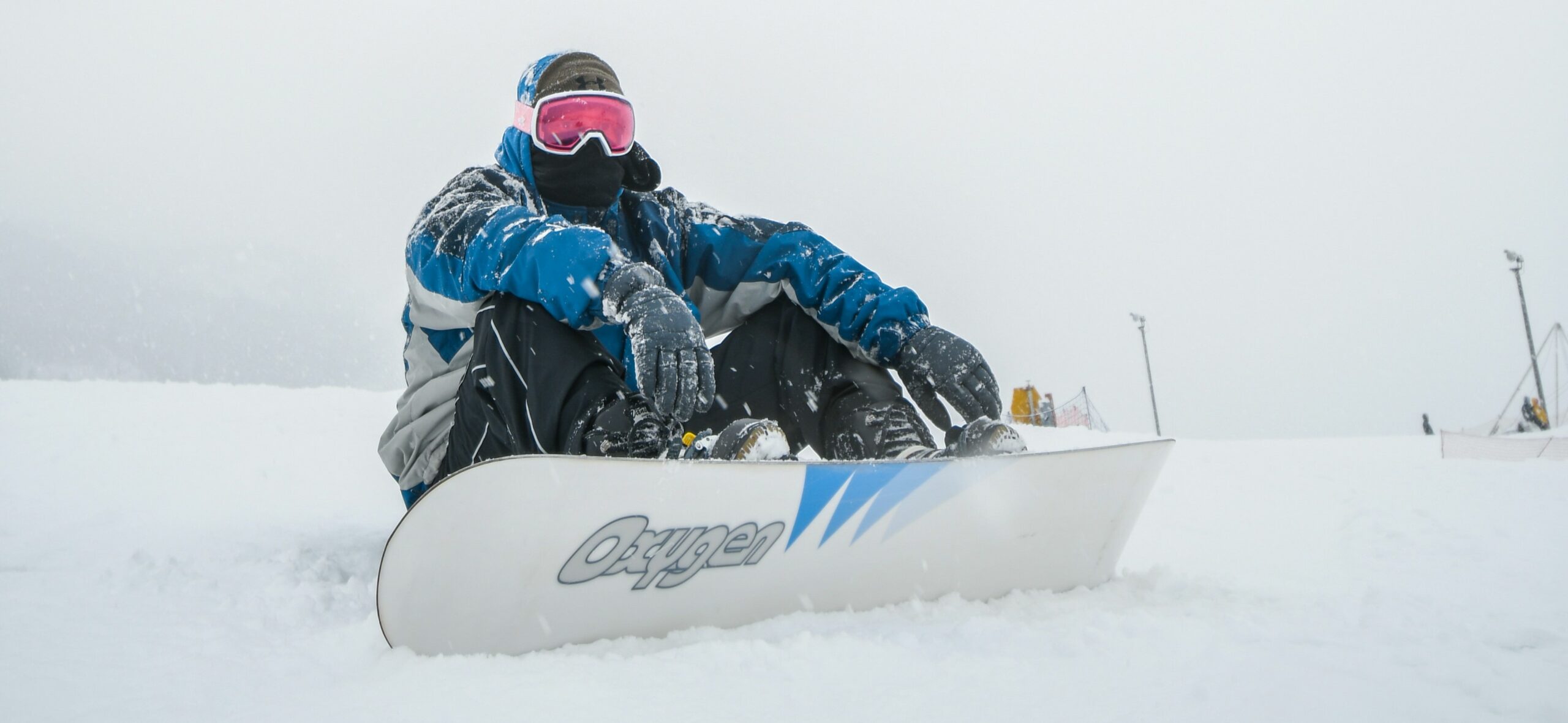
Promoting Flexibility and Mobility
You can have all the strength in the world, but if you can’t stand up while strapped to your snowboard, you won’t fare well in this sport. Flexibility and mobility are two major requirements of the sport. Snowboarding continues to be seen as a younger person’s sport due to the mobility requirements.
How can we prepare and maintain our flexibility to ensure our time on snow is enjoyable and also prevent pulled muscles? Stretch, foam roll and PRACTICE YOGA. Snowboarding requires looseness in the lower body and the ability to bend and rotate at the waist. Stretching your quads, hamstrings, calves, hips, glutes and lower back are some of the most important parts to pay attention to after you snowboard. Holding stretches for 30 seconds and repeating a few times helps stretch the muscles more and more each time.
Foam rolling is a useful (and usually painful) way of lowering your muscle’s baseline tightness. This is important for overall muscle flexibility and movement. Grab a foam roller and roll your lower body slowly, briefly stopping on tight spots. Move onto the back, shoulders and neck to finish.
Foam rolling can suck, but it feels amazing when you’re done. For trigger points, you can employ the use of a lacrosse or tennis ball on areas like your hips, neck and glutes to really loosen off those areas that hold a lot of tension.
Yoga is an absolute game changer in the sports world. Physically, it helps improve your flexibility, strength and baseline muscle tension. Mentally, it can help ground you, reduce stress and promote mindfulness. Yoga classes at your local studio or gym can provide excellent opportunities for overall body mobility.
Don’t have a studio around you or don’t want to be seen falling over in a public class? Check out Youtube. You’ll be able to find almost any yoga practice you can think of. Lower body, low back, strength and flow and even snowboard specific. They can range from five minute videos to over an hour! Here’s an example of a great preseason or pre-ride yoga session you can do in about 10 minutes.
The Importance of Rest and Recovery
After all that strength training and physical activity, it’s important to let your body rest and recover. Every time you work out, you develop tiny tears in the muscles, which need time to rebuild. This is what makes you stronger. Although stretching can be done every day, things like heavy strength training and long cardio sessions should be done every other day.
This allows the body time to recover and build back up after a workout. If you want to hit the gym 4+ times a week, consider split training, essentially training different body parts on different days. This provides each muscle group with adequate time to rest and recover. Mobility and yoga can be done every day and is a great addition that helps you maintain flexibility in your everyday life, especially if you work sitting at a desk.
Never overdue your snowboarding or training. Injuries can happen, and you don’t want to put yourself out of commission because you didn’t listen to your body when you should have.
Conclusion
Snowboarding is a demanding sport, especially as a beginner. If you want to excel, improve and look forward to season after season of fun on the slopes, it’s imperative to take care of your body. On and off the slopes, inside and outside of the gym, focus on increasing strength, improving cardiovascular endurance and eating healthy.
The benefits of training for snowboarding are not just related to the sport. These steps will not only keep you in shape for snowboarding, but they will lead to a higher level of physical and mental health to take you through life.
